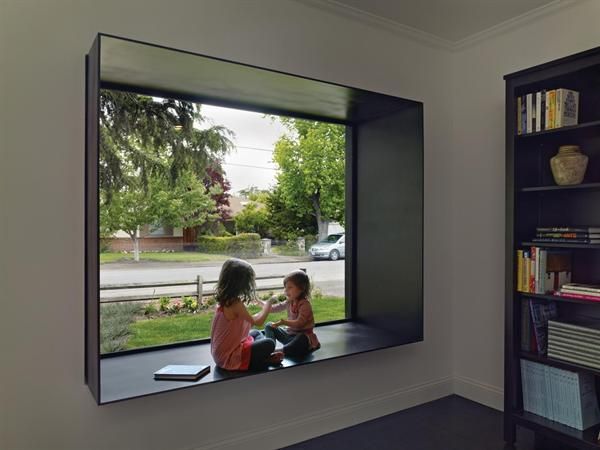Natural lighting in a home is something to consider when buying a home, redecorating, building or designing a home. Energy efficiency is one of the biggest reasons why, since 10% of household electricity usage comes from lighting alone (according to the United States Department of Energy), and it also helps to heat the home. Using natural light instead of relying on light fixtures will single-handedly help to lower the electricity bill, saving you a significant amount of money.
So how can homeowners add more natural lighting?
-
Careful Interior Design Planning

Designing a home – often it is not as easy to design your home as it may seem at first. Make sure to take special care in paying attention to how the house faces the rising and setting sun. Also take into account your lifestyle – are you a morning or night person? Do you want more sun in the bedroom in the morning or in the living room in the afternoon? In order to maximize the suns’ rays, make sure the longest side of your home faces the sun. On the flip side, decide which rooms require less sun, such as the TV room where the blinds will most likely be closed ninety percent of the time for optimum TV viewing sans glare.
There are more important questions that need to be answered prior to making actual re-design plans and it is of utmost importance to have most of them answered before taking action. If you are interested in doing the complete redesign yourself, or to learn more about how to decorate you may want to consider applying for interior design classes.
-
Use Existing Natural Light Sources

Get more light from existing windows – An easy fix is just keeping the shades up and pulling curtains back. Also consider the furniture that’s in front of windows (don’t block it with couches or chairs). Keep windowsills clear on the inside and keep hedges trimmed on the outside. Take stock of your window treatments – do they allow for light? Roman shades, layered fabric or thick drapery will keep the room much darker than sheer or single-layer drapes made of linen or cotton.
Paint Colors – The best paint colors to use for natural lighting are white or lighter colors in cool tunes, such as taupes and bluish-grays. Even white trim around windows will make a difference. Metallic finishes on the ceiling will also help reflect the light. Dark colors will absorb light. If paint colors are kept light, then deeper colors can be used as accents in smaller furnishings such as pillows and knickknacks.
Furniture – Along with wall paint, having furniture in lighter colors will open up a room as well. Lighter colors and fabrics such as cotton and linen will keep a room much brighter than furniture in heavier fabrics such as brocades and velvets.
Mirrors – mirrors reflect the light into different areas and corners of the room. This is especially helpful in dark or smaller rooms. Some ways to do this are to arrange several smaller mirrors on a wall, use furniture with reflective accents (such as mirrored, chrome or glass), or even line the back of bookshelves with mirrors.
Front Door – many front doors are solid, but consider one with a window. There are many options to choose from that have high security, so not only will they be beautiful and light-filled, but they will also be safe.
Install or Expand Windows – if you just don’t have enough windows or if the ones you have are too small, there is always the option to install more or make bigger the ones you already have. It may be more expense up front, but the windows will pay for themselves through heating and electrical costs, especially if they are on the exterior wall of the house where you receive maximum sun.
Skylight – another option is installing a tubular skylight. This is only a minor installation cost because it reflects light through a tube within a small opening of the roof (only 18 inches wide). The best places to install these skylights are in rooms that are the most used as well as in locations that will get most of the sunlight.
Not only does natural lighting add beauty and monetary benefit to your home, it also adds health benefits:
Depression – natural lighting actually increases both serotonin and endorphins which fights both seasonal affective disorder and depression, leaving you feeling better both psychologically and physically.
Boosts Immunity – natural light is the enemy of dark and wet spaces, which breed bacteria. The UV rays are a natural antiseptic. It also keeps at bay premenstrual syndrome and insomnia. Vitamin D is best absorbed into our bodies via natural sunlight, and this helps to prevent other diseases such as osteoporosis in adults and rickets in children.
Whichever method you choose, you will definitely see the benefit of adding more natural light to your home!

